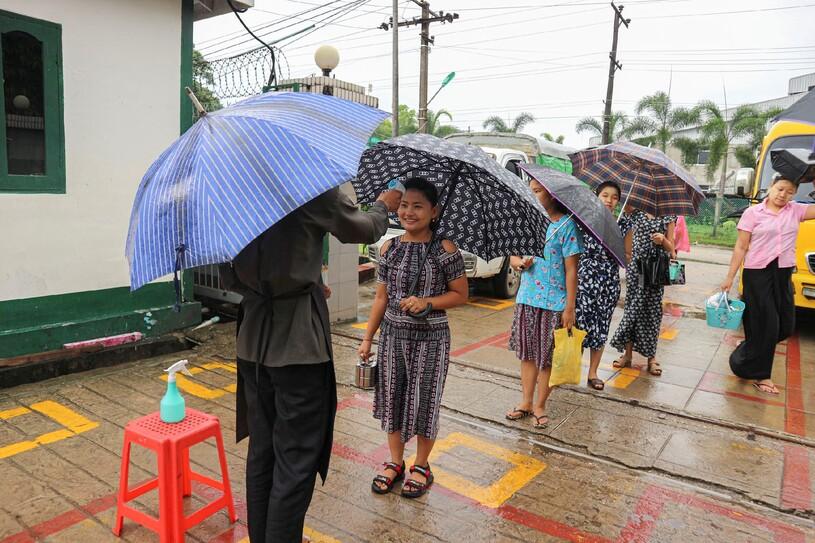Textile workers in South-East Asia: awareness protects against infection
Textile workers in Myanmar and Cambodia are at particular risk from COVID-19. Comprehensive awareness campaigns are helping to increase protection against the pandemic.

In textile factories in Cambodia and Myanmar, space is cramped for workers, most of whom are women. In the current COVID-19 pandemic, special protective measures are therefore required if they are to continue working. Since the outbreak of the pandemic, the Deutsche Gesellschaft für Internationale Zusammenarbeit (GIZ) GmbH, together with the International Labor Organization (ILO) and others, has launched several COVID-19 protection campaigns for textile workers. On behalf of the German Federal Ministry for Economic Cooperation and Development (BMZ), the campaigns provide information relating to COVID-19, infection protection and labour law.
The risk of infection begins on the way to work
Most textile workers travel to factories in small trucks. ‘We don’t have enough vehicles to maintain a safe distance from one another on the way to work,’ says Moe Wathan, a worker from Myanmar. The journey to work spent sitting closely together in large groups puts them at high risk of infection before work even begins. To reduce the risk of infection in the long term, a special campaign was launched. With GIZ’s support, textile workers and drivers learned about how COVID-19 can spread in enclosed spaces and the protective measures that can help to reduce the risk of transmission.
Through posters and banners in and on vehicles, as well as hygiene measures, 150 factories and more than 120,000 workers have already been reached using this quick and easy approach. Over 9,000 posters and 70,000 flyers focusing on health and rights provided information to factory workers in Myanmar. Some 30 union representatives received special training to become trainers on health-related topics. In addition, around 4,000 bottles of hand sanitiser and 5,000 bottles of liquid soap were distributed.
To offer all workers lasting protection from health risks, doctors in Myanmar also sought to identify safety gaps in the factories. Prevention teams then remedied these issues.